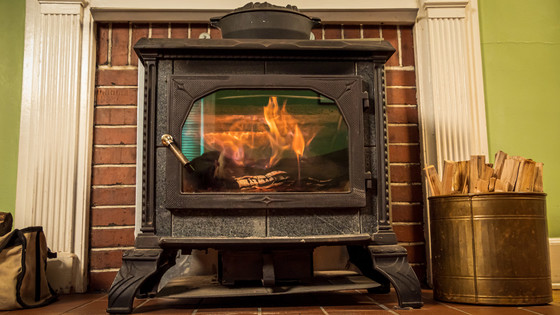 As temperatures get colder, many of us start our first fires of the heating season. We want the warmth of a cozy fire, but not the unhealthy smoke or the creosote build-up in our chimney that can increase the danger of a house fire.
The less efficient the fire, the more wood smoke pollution is produced and the more potential for creosote to build up. According to the National Fire Protection Association, a leading factor contributing to fires from home heating is a dirty chimney (i.e., creosote build-up).
Here are some tips for burning the?Right Wood, the?Right Way, in the?Right Appliance?for a hotter fire with less smoke and creosote.
?Burn the Right Wood:
- Burn only dry, seasoned wood for a hotter fire with less smoke. Wood burns most efficiently if the moisture content is 20 percent or less.
- Split your firewood before storing -- it dries much faster. Slope the woodpile cover to encourage rain runoff.
- Freshly cut wood needs time to season ? store for a minimum of 6 months for softwood and 12 months for hardwood. To see if your wood is ready to burn, test it with a moisture meter. Watch?EPA's how-to video.
Burn Wood the Right Way:
- The easiest way to get a fire going is to build a small fire. Use seasoned pieces of kindling or an all-natural fire-starter. Gradually add larger pieces of split, dry firewood.
- A fire needs oxygen. Provide sufficient air to the fire and keep space between logs when adding more fuel.
Use the Right Appliance:
- Upgrade to a cleaner wood heating device like an EPA-certified pellet device or catalytic/hybrid wood stove or fireplace insert. A properly installed and operated EPA-certified wood stove (or fireplace insert) can reduce air pollutants by 70 percent compared to older uncertified models. Find cleaner-burning appliances at?www.epa.gov/burnwise.
- Have your wood burning appliance and chimney inspected and maintained annually by a certified professional for optimal performance and reduced creosote build-up.
- Avoid the wood storage and smoke altogether and upgrade to a gas heater?or heat pump.
And remember:?Smoke May Smell Good, But It?s Not Good For You
Smoke is made up of a complex mixture of gases and fine particles. The biggest risk is from fine particles. These microscopic particles can penetrate deep into your lungs. They can cause a range of health problems, from burning eyes and a runny nose to aggravated chronic heart and lung diseases. Exposure to particle pollution is even linked to premature death.
Find out more at BurnWise
|
